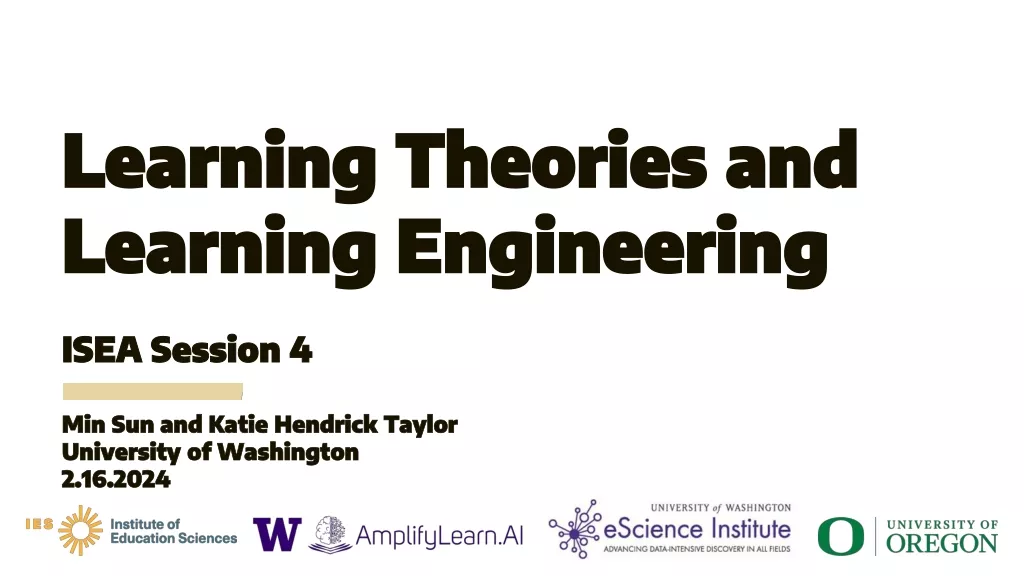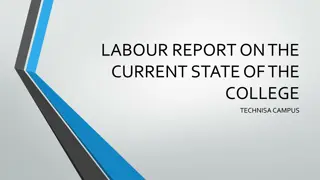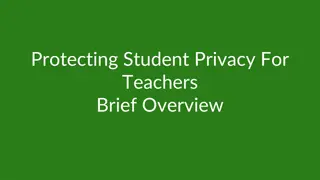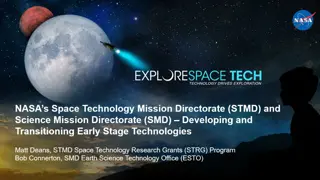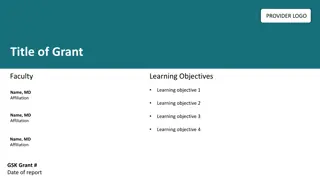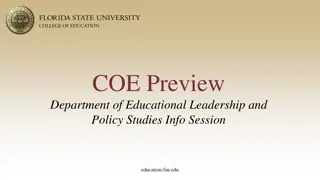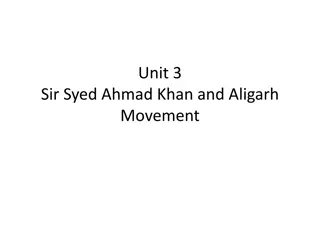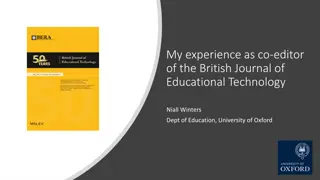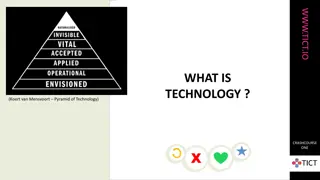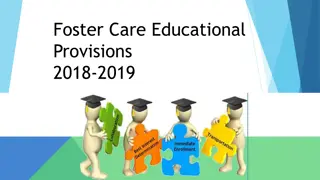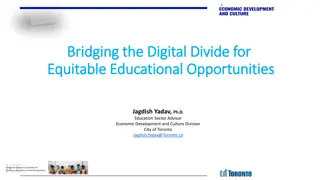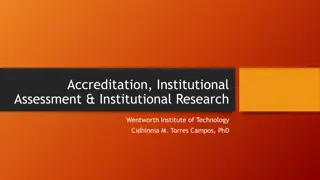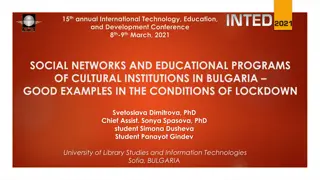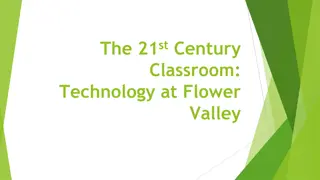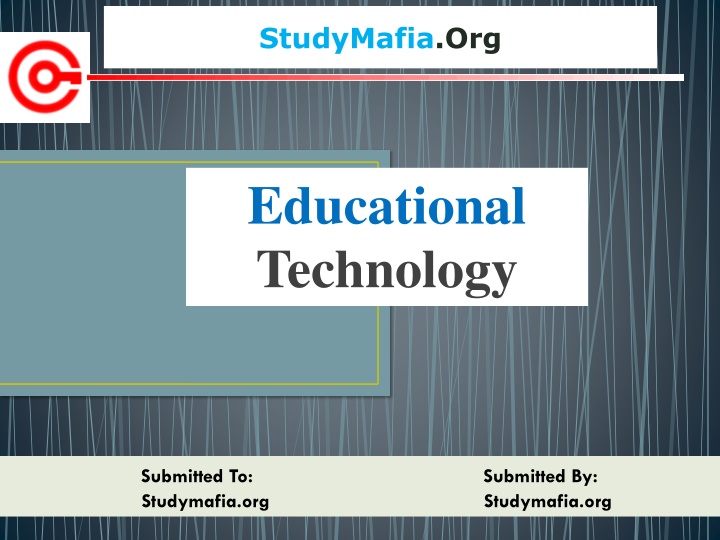
Educational Technology: Theory, Practice, and Applications
Explore the world of educational technology, encompassing the use of computer hardware, software, and theory to enhance learning experiences. Delve into the theoretical foundations, practical applications, and diverse teaching methodologies within this innovative field.
Uploaded on | 1 Views
Download Presentation

Please find below an Image/Link to download the presentation.
The content on the website is provided AS IS for your information and personal use only. It may not be sold, licensed, or shared on other websites without obtaining consent from the author. If you encounter any issues during the download, it is possible that the publisher has removed the file from their server.
You are allowed to download the files provided on this website for personal or commercial use, subject to the condition that they are used lawfully. All files are the property of their respective owners.
The content on the website is provided AS IS for your information and personal use only. It may not be sold, licensed, or shared on other websites without obtaining consent from the author.
E N D
Presentation Transcript
StudyMafia.Org Educational Technology Submitted To: Submitted By: Studymafia.org Studymafia.org
Table Contents Definition Introduction Theory of Educational Technology Technologies in Education Conclusion 2
Definition Educational technology (commonly abbreviated as edutech, or edtech) is the combined use of computer hardware, software, and educational theory and practice to facilitate learning. 3
Introduction In addition to the practical educational experience, educational technology is based on theoretical knowledge from various disciplines such as communication, education, psychology, sociology, artificial intelligence, and computer science. It encompasses several domains including learning theory, computer-based training, online learning, and m-learning where mobile technologies are used. 4
Theory of Educational Technology Behaviorism Teaching in behaviorism has been linked to training, emphasizing animal learning experiments. Since behaviorism consists of the view of teaching people how to do something with rewards and punishments, it is related to training people. 6
Theory of Educational Technology Cognitivism Cognitive science underwent significant change in the 1960s and 1970s to the point that some described the period as a "cognitive revolution", particularly in reaction to behaviorism. While retaining the empirical framework of behaviorism, cognitive psychology theories look beyond behavior to explain brain-based learning by considering how human memory works to promote learning. 7
Theory of Educational Technology Constructivism Educational psychologists distinguish between several types of constructivism: individual (or psychological) constructivism, such as Piaget's theory of cognitive development, and social constructivism. This form of constructivism has a primary focus on how learners construct their own meaning from new information, as they interact with reality and with other learners who bring different perspectives. 8
Technologies in Education Audio and video Video technology has included VHS tapes and DVDs, as well as on-demand and synchronous methods with digital video via server or web-based options such as streamed video and webcams. Webcams and webcasting have enabled the creation of virtual classrooms and virtual learning environment. 9
Technologies in Education Computers, tablets, and mobile devices Collaborative learning is a group-based learning approach in which learners are mutually engaged in a coordinated fashion to achieve a learning goal or complete a learning task. With recent developments in smartphone technology, the processing powers and storage capabilities of modern mobiles allow for advanced development and the use of apps. 10
Technologies in Education Collaborative and social learning Group webpages, blogs, wikis, and Twitter allow learners and educators to post thoughts, ideas, and comments on a website in an interactive learning environment. Social networking sites are virtual communities for people interested in a particular subject to communicate by voice, chat, instant message, video conference, or blogs. 11
Technologies in Education Whiteboards There are three types of whiteboards.[118] The initial whiteboards, analogous to blackboards, date from the late 1950s. The term whiteboard is also used metaphorically to refer to virtual whiteboards in which computer software applications simulate whiteboards by allowing writing or drawing. 12
Technologies in Education Virtual classroom A virtual learning environment (VLE), also known as a learning platform, simulates a virtual classroom or meetings by simultaneously mixing several communication technologies. Web conferencing software enables students and instructors to communicate with each other via webcam, microphone, and real-time chatting in a group setting. 13
Technologies in Education Learning management system A learning management system (LMS) is software used for delivering, tracking, and managing training and education. It tracks data about attendance, time on task, and student progress. Educators can post announcements, grade assignments, check on course activities, and participate in class discussions. 14
Technologies in Education Learning content management system A learning content management system (LCMS) is software for author content (courses, reusable content objects). An LCMS may be solely dedicated to producing and publishing content that is hosted on an LMS, or it can host the content itself. 15
Technologies in Education Computer-aided assessment Computer-aided assessment (e-assessment) ranges from automated multiple-choice tests to more sophisticated systems. With some systems, feedback can be geared towards a student's specific mistakes, or the computer can navigate the student through a series of questions adapting to what the student appears to have learned or not learned. 16
Technologies in Education Training management system A training management system or training resource management system is software designed to optimize instructor-led training management. Similar to an enterprise resource planning (ERP), it is a back office tool that aims at streamlining every aspect of the training process: planning (training plan and budget forecasting), reporting, and sales for-profit training providers. 17
Conclusion Educational Technology is the field of study that investigates the process of analyzing, designing, developing, implementing, and evaluating the instructional environment, learning materials, learners, and the learning process in order to improve teaching and learning. 19
References Google.com Wikipedia.org Studymafia.org Slidespanda.com
Thanks To StudyMafia.org

